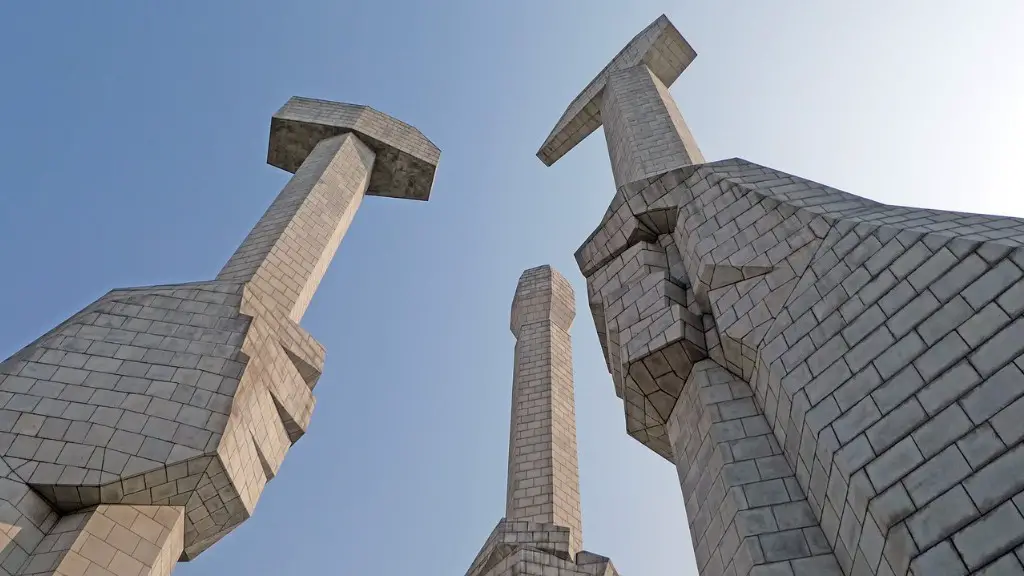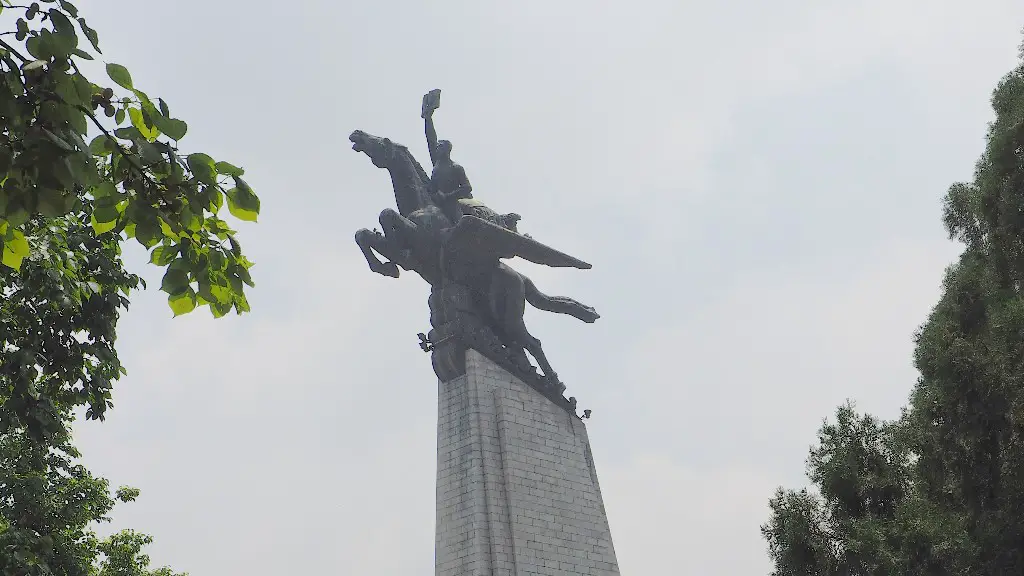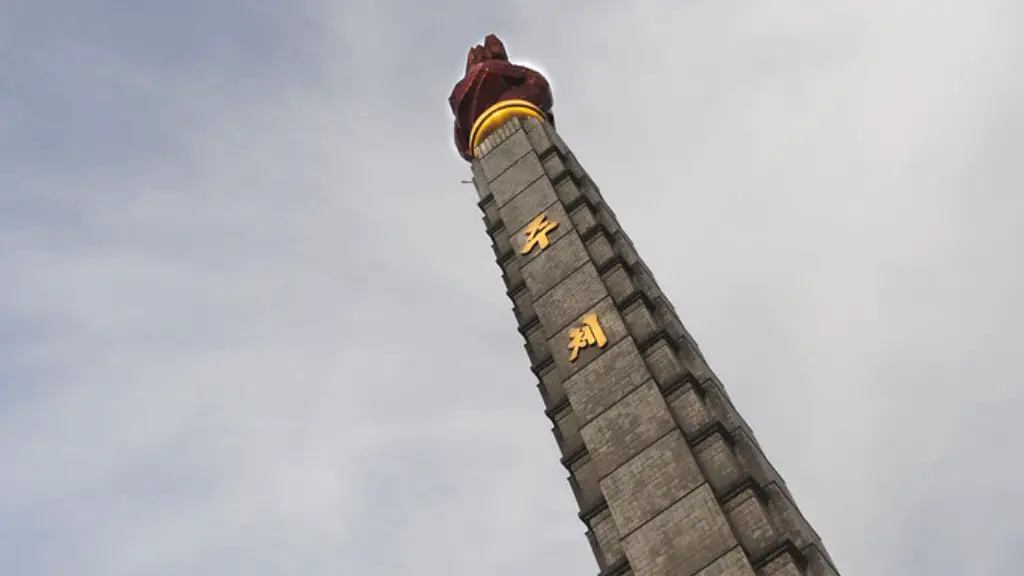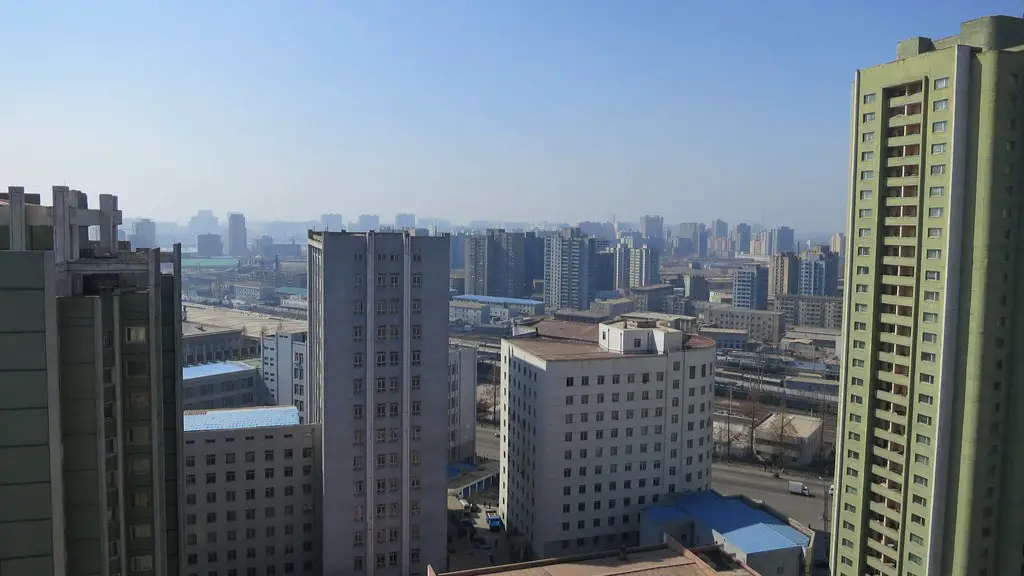What is North Korea Saying Now?
North Korea has stirred international attention in recent years due to its missile tests, military exercises, and missile provocations. However, it is not only the country’s military capabilities that have shown to the world what it is aiming for, but also its consistently aggressive rhetoric. North Korea is known to stir up tensions with its neighbouring countries by issuing belligerent and inflammatory statements.
Recently North Korea has been targeting the North East Asian countries of Japan, South Korea and the USA in its aggressive language. Kim Jong Un recently threatened to attack Japan with nuclear weapons, citing their continued military exercises as provocation. This suggests that North Korea is indicating that it sees Japan as a potential danger. South Korea has experienced similar treatment from North Korea in terms of threatening language which suggests that it is also seen as a potential threat.
The USA has also been subject to North Korea’s aggression with Kim Jong Un issuing constant threats of nuclear bombs should the US move fighters against North Korea. This ongoing threat and ensuing fearmongering is then used to support North Korea’s political platforms and its military policies.
The rhetoric coming from North Korea is then used to stoke regional tensions and give the impression to neighbouring states, and further afield, that the country is prepared to use extreme measures to ensure its own security. In doing so it creates a sense of fear and causes anxiety among its neighbours. This, in turn, leads to countries attempting to strengthen their own defences, further perpetuating the cycle of regional security dilemmas.
The language used by modern North Korea serves many functions and is used as a tool of communication to send a message of power and strength towards those states that it sees as a potential threat. North Korea’s rhetorical tools are based on the utilisation of metaphors and other rhetorical devices to evoke emotions in the listener and further portray its boldness. This intentional use of language has allowed North Korea to project an image of a powerful militaristic state and deter possible aggression by potential enemies.
Experts suggest that North Korea’s rhetoric serves to warn other states to stay away and not interfere in its internal affairs. In addition to this, it likely serves as an effort to deter Japan and the USA and it is likely to have a secondary economic purpose. By maintaining the threat of tension and conflict in the region, North Korea may, in fact, be looking to secure economic investments in exchange for peace and deescalation.
How has North Korea’s rhetoric changed?
North Korea’s rhetoric has changed over time in response to the external environment. The rhetoric used by Kim Jong Il was always bellicose, perhaps as a way to project strength in a hostile and uncertain environment for North Korea. However, under the current leader, Kim Jong-Un, the tone is more conciliatory and offers a more pacifistic rhetoric that seeks to deescalate tensions.
One example of this is during North Korea’s participation in the Pyeongchang Olympics in 2018. North Korea sent a delegation and a joint North-South Korean Women’s Ice Hockey team in what appeared to be an attempt to ease tensions and reduce hostility. Similarly, Kim Jong Un sent a delegation to South Korea as part of a series of diplomatic maneuvers that looked to foster better relations between the two countries.
Kim Jong Un’s rhetoric changed even further when he conducted meetings with US President Donald Trump following a period of severe tensions and the testing of high-powered nuclear weapons. President Trump and Kim Jong Un argue that this meeting could result in denuclearisation which could lead to less use of bellicose language as nuclear weapons are perceived to increase international tensions.
Ultimately, the rhetoric coming out of North Korea has shifted over time, most notably when Kim Jong Un took power. It appears that this shift has been reciprocated by other countries, notably the US, and has opened the door to increased dialogue and the potential for better relations.
What are the experts saying about North Korea’s rhetoric?
Experts in the field suggest that North Korea’s rhetoric is not just about expressing anger and aggression. Rather, it is also about negotiating power dynamics and is utilised as a tool to show strength and project an image of power. Through aggressive rhetoric, North Korea has been able to achieve certain goals, such as to deter potential adversaries, to mobilise internal support and to secure economic investments.
This is an effective strategy because it can drive fear into the adversary and make them more likely to respond in a desired way. To this end, North Korea’s discourse has been successful in achieving certain goals, however, it comes with a risk: if the rhetoric is not toned down, the risk of actual conflict increases.
Additionally, experts note that North Korea’s rhetoric is not immutable. Rather, it has become more conciliatory in recent months and dialogue has increased. This is seen as a positive sign, as it could potentially lead to a de-escalation of tensions and improved relations between North Korea and other states.
What could be the consequences of North Korea’s rhetoric?
There are many potential consequences of North Korea’s aggressive rhetoric. Most significantly, it could lead to an actual outbreak of hostilities between the countries. This could result in significant destabilisation of the region, with potentially devastating economic, social and political consequences.
North Korea’s approach could also lead to other countries taking a more aggressive stance towards it. This could result in further sanctions and a worsening of the diplomatic situation. Furthermore, it could also make other states more reluctant to engage in dialogue as North Korea’s hostile language may make them less open to potential negotiations.
Finally, North Korea’s rhetoric could also lead to an international arms race as other countries may attempt to bolster their own defences in order to counter any potential aggression from North Korea. This could, in turn, exacerbate the mistrust between states and the potential for an actual conflict.
What can other countries do to respond to North Korea’s rhetoric?
Experts have suggested that in order to counter North Korea’s rhetoric, other countries should take a measured and cautious response. Engaging in dialogue and finding a middle ground between the two sides is seen as one of the most effective ways of countering North Korea’s aggressive language. Additionally, international cooperation and collaboration could also prove to be beneficial, as it could put pressure on North Korea to abandon its aggressive rhetoric.
International institutions could also weigh in on the situation and attempt to resolve the conflict through mediation and diplomacy. Sanctions could be used as a means to force North Korea to the negotiating table and use its rhetoric for political and economic gain, rather than for aggressive purposes.
At the same time, it is important for states to remain vigilant and not be overly-alarmed by North Korea’s rhetoric. In some cases, the rhetoric is only used as a way to increase negotiating power. Therefore, it is important for states not to take what North Korea is saying at face value and to remain wary.
What is North Korea trying to achieve through its rhetoric?
The interpretation of North Korea’s rhetoric is subjective and can vary significantly depending on the context. Generally, however, experts agree that North Korea is trying to achieve several goals through its rhetoric. These include staking a claim to being a strong military power, galvanising domestic support and attempting to deter other countries through fear.
In addition to this, North Korea may also be looking to curry favour with external parties, primarily through economic means. Through its rhetoric, North Korea can increase the perception of itself as an unpredictable actor and make other countries wary of its intentions. This can then be used as a bargaining chip, as other states may be more receptive to economic incentives in exchange for peace and deescalation of tensions.
Finally, North Korea’s rhetoric could also serve to increase Kim Jong Un’s stature on the international stage. By using aggressive language and walking a fine line between war and peace, North Korea’s leader is able to portray himself as a strong leader who is not afraid to stand up to the powers that be.
What does the future of North Korea’s rhetoric look like?
The future of North Korea’s rhetoric will be largely dependent on how the situation develops in the future. If tensions begin to ease and negotiations become more likely, then it is likely that North Korea’s rhetoric will also become less aggressive as it attempts to deescalate the conflict. Additionally, international efforts to resolve the situation, such as through mediation and diplomatic talks, could also lead to a decrease in hostility.
At the same time, however, it is important that all parties remain vigilant and not let their guard down. North Korea’s rhetoric has a habit of shifting quickly and, if tensions begin to rise again, so too could its words and actions. Therefore, it is important for countries to continue to monitor the situation closely and be prepared for any eventuality.





